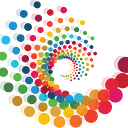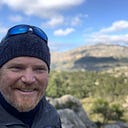Gaia Education’s Resources for Creating Multipliers of Local SDG Implementation
Published in ‘Sustainability — The Journal of Record’, Vol.12, №2
Abstract
Implementing the UN SDGs at multiple scales — local, city, bioregional, national, and international — will require culturally creative, cross-sector conversations about how they relate to the aspirations and challenges of unique communities in particular locations. This case report describes three educational tools and a workshop developed by Gaia Education to facilitate such conversations. The SDG Flashcards, the SDG Project Canvas, and the SDG Multipliers Handbook are used in concert to support the Training of Multipliers Workshops. In partnership with the Global Action Programme (GAP) of the United Nations Educational, Scientific and Cultural Organization (UNESCO), this collection of resources has been translated into six languages, and trainings have been offered in 16 countries onfive continents. The purpose of this collection of resources is to rapidly cultivate multipliers — people who are able to facilitate local and regional conversations about how implementation of the SDGs can be sensitive to and informed by the biocultural uniqueness of place. This case report concludes with a discussion of the trainings held, participant feedback, and opportunities and strategies for improving the resources.
Introduction
The SDG Flashcards, the SDG Project Canvas, the SDG Multipliers Hand- book, and the day-long Training of Multipliers Workshop were developed by Gaia Education and published in partnership with the United Nations Educational, Scientific and Cultural Organization (UNESCO) Global Action Programme on Education for Sustainable Development (GAP). Underlying the creation of these resources is the premise that advancing culturally creative, cross-sector civic participation and taking advantage of potential synergies that arise from intersections among the SDGs can help elicit the new ways of thinking and communicating that lead to transformative change, which is necessary for leveraging implementation of the UN SDGs at multiple scales and, ultimately, for achieving the United Nations 2030 Agenda for Sustainable Development.
The visionary design-scientist and engineer R. Buckminster Fuller is reported to have said, “If you want to teach people a new way of thinking, don’t bother trying to teach them. Instead, give them a tool, the use of which will lead to new ways of thinking.” This advice inspired the development of the collection of re- sources described herein. These resources enable easy facilitation of a highly replicable, one-day Training of Multipliers Workshop, which has been designed to support multi-sector collaboration toward place-focused, systemic implementation of the SDGs, one business, community, NGO, city, bioregion, and nation at a time.
The Resources: Three Tools and a Workshop
The SDG Flashcards
The SDG Flashcards are intended to help people think about the SDGs in a more holistic, systemic, and bioregionally and culturally sensitive manner. They are premised on the conviction that asking the right questions is a profoundly effective strategy for helping to generate meaningful, lasting change. Fifty-one of the cards — three for each of the 17 SDGs — present thought-provoking questions. Each card also identifies four basic trends in the four dimensions of Gaia Education’s whole systems design approach to sustainability — social, ecological, economic, and worldview — represented by the four white boxes on the top and bottom edges of the card (see Figure 1).
The same four themes are carried through the three cards for each SDG. In addi- tion, each card poses four unique questions represented by the four colored boxes in the middle of the card. The questions draw on each of these themes to raise challenges intended to invite small groups of participants to explore and co-create solutions that are tailored to their own lives, communities, bioregions, and affiliations (see Figure 1). When multiple cards or SDGs are considered, participants can deepen their understanding of the systemic relationships among the different SDGs and, possibly develop potential implementation pathways for all 17 SDGs.
An additional set of 10 flashcards provides a general introduction to the 17 SDGs, offers a historical time line of the United Nations sustainable development process, describes the aims of the UNESCO Global Action Programme and its roadmap for implementation, explains the UN reference framework for implementation, and emphasizes the need for a systemic approach by drawing on work of the Stockholm Resilience Centre. Together, the full set of 61flashcards guides people into a sophisticated, culturally creative conversation about the local relevance of each SDG and challenges them to identify projects — potential, new, and already underway — that might support the synergistic implementation of all 17 SDGs in a manner that is in tune with local ecosystems and cultures.
In partnership with the UNESCO GAP Secretariat, the cards have been made available in six languages (English, Portuguese, French, Spanish, Arabic, Russian), and a Chinese version will be released in early 2019.
The SDG Project Canvas
The SDG Project Canvas is an adaptation of the basic Business Model Canvas, which was originally developed to support rapid business model generation. It modifies the original questions to create an exercise around rapidly sketching SDG implementation projects that are tailored to particular places and cultures. Following the original canvas model, the SDG Project Canvas was published under a Creative Commons 4.0 NC license.
Small groups of participants can use the Project Canvas as a template for brainstorming, strategizing, and prioritizing as they collaborate to outline an integrated and locally meaningful SDG implementation project (this is usually done in the second half of the one-day Training of Multipliers Workshops). The purpose of this exercise is to give small groups an opportunity to cocreate a coherent narrative and a more de- tailed sketch of how their chosen project might be designed and implemented in practice. The groups explore together who the key partners need to be and what activities would make their project a success. They list resources required and articulate the project’s Theory of Change. Furthermore, the Project Canvas invites exploration of how to ensure widespread participation, what key policies might help garner support from local authorities, who will be the primary beneficiaries of the project (and who might be impacted adversely by it), as well as details on cost, other resources, and how to fund the project (see Figure 2).
Once the small groups have sketched out their project using the canvas, they are given the opportunity to present their project to all the participants in an elevator-pitch, which addresses the what, how, why, and who of their proposed SDG implementation project.
The SDG Multipliers Handbook
The purpose of the Multipliers Handbook10 is to support Training of Multipliers Workshop participants in their efforts to become multipliers. A multiplier is someone who takes on the role of facilitating conversations about SDG implementation in their community, organization, business, or educational institution. The flashcards, canvas, and Multipliers Workshop support emergent SDG multipliers with resources and a structured methodology, which is described in detail in the Handbook.
The Handbook also offers descriptions of how to prepare, promote, and facilitate a full-day Training of Multipliers Workshop using the flashcards and canvas. It outlines who the training is for, how it can be adapted to different contexts, and how to set up the workshop space; it also lists desired outcomes for the training and includes a materials checklist. While Gaia Education recommends attending a one-day or half-day Training of Multipliers Workshop, which walks participants through the materials and exercises, prior to stepping into the facilitators role, the Handbook does offer enough minute-by-minute detail to enable experienced trainers and facilitators to run a workshop simply by following the steps provided. The handbook contains two detailed workshop scripts for a one-day and a half-day version of the Training of Multipliers, each offering a step-by- step list of what exercises to facilitate in what sequence and how to do so.
Results
The SDGs Flashcards were first used at a regional workshop of the UNESCO GAP in Hamburg, Ger- many, in December 2016. The first Training of Multipliers Workshop was offered at the University of the Balearic Islands, Majorca, Spain, in January 2017. Since then, Training of Multipliers Workshops have been offered to very diverse groups of learners around the world, ranging from social innovators in Latin America and community activists in Southeast Asia to immigrants in southern Italy and Denmark and rural-development workers in India. The Multipliers Workshop has also been offered at UNESCO meetings and conferences in Canada, Argentina, Germany, France, and Egypt, as well as, during a high-level meeting on the SDGs in September 2018 at the UN Headquarters in New York.
Over the past two years more than 1,500 multipliers have been trained in 41 official Trainings of Multipliers in 16 countries on five continents.
… (continues)
Download the whole paper in (free)pdf format here.
See the whole “Special Issue on the Learning Foundations and Practice of the United Nations’ Sustainable Development Goals” here.

